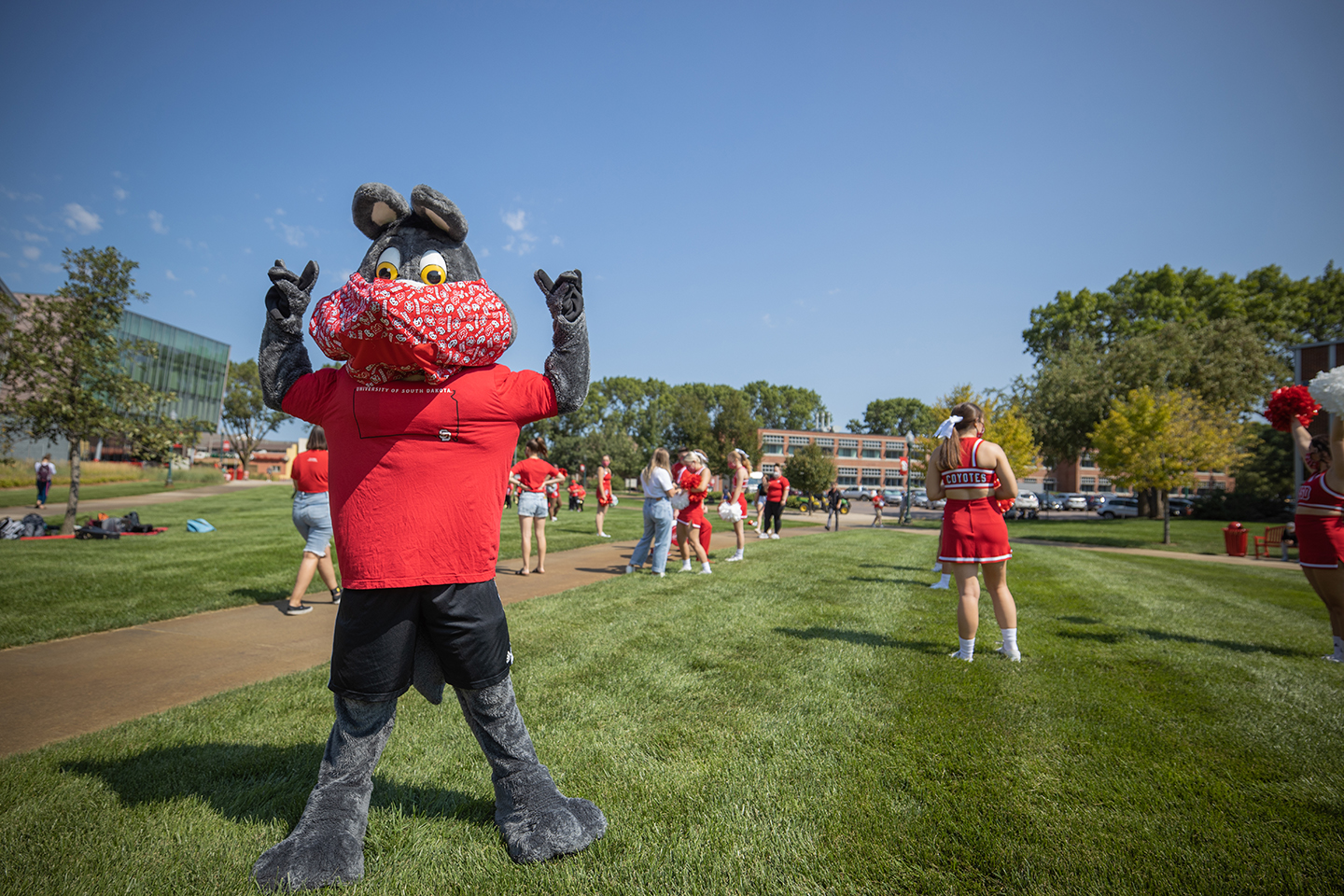
USD professors evaluate fall semester, look ahead to spring
This semester, the entire USD community implemented and adapted to the changes in place due to COVID-19. From wearing masks across campus to getting used to hybrid and online learning, the fall semester was much different than years past.
While students had to adjust to new schedules and campus operations, USD professors had to alter their entire course loads in order to reach every student, whether it be in the classroom or remotely.
As the semester comes to a close, USD professors are determining what went well this semester and how next semester will look.
Prentiss Clark, assistant English professor, is in her sixth year teaching at USD. This semester, she taught an American literature course, which was hybrid, and Aesthetics, which was a face-to-face course.
Clark said this semester made her realize what she had taken for granted in the classroom.
“The biggest challenge, for me at least, has been figuring out how to enable class discussion when we can’t see each other’s faces or sit near to each other and when speaking through masks — and hearing — is difficult,” Clark said. “Social distancing, masks and the necessary safety precautions limit the kinds of personal interactions that make a classroom lively and engaging.”
Learning new technologies, teaching in new formats and helping students in various stages of quarantine or illness, Clark said, were just a few of the day-to-day things she and other professors on campus managed.
Clark said this was her most challenging semester at USD yet, but she has also learned many things she will keep in mind for next semester.
“I’ve learned that Zoom fatigue is real, but I’ve also learned that many universities and libraries and scholarly organizations are making lectures and events free and available to the public,” Clark said. “We have access to writers, and artists, and scientists, who we wouldn’t ordinarily have access to. I’m going to integrate more of these online opportunities into my classes next semester.”
Joel Sander, associate physics professor, is in his eighth year teaching at USD. Similar to Clark, Sander said this semester was difficult, but also allowed him to learn how to teach more effectively.
“Getting everybody trained and getting students all on the same page with technology they’ve never used before was really challenging,” Sander said. “That was a lot of work early in the semester, but I eventually got there and it worked out in the first couple of weeks.”
Sander taught astronomy and astronomy lab this semester. Since 180 students are enrolled in astronomy, the course was taught entirely online, while the lab was taught in a hybrid format. Sander teaches astronomy online in the summer, so he said making the shift in the fall was relatively easy.
“I’d begun recording video lectures before COVID happened,” Sander said. “So a lot of that class was already packaged and ready to go. There are some aspects of the online course that didn’t scale well to 180 students so I had to adjust those, but that wasn’t as big of a thing.”
Sara Lampert, an associate history professor, also taught a mix of online and hybrid courses this semester. For her online courses, Lampert said delivering them in a synchronous format was most effective in terms of developing connections with students, but it took some getting used to.
“Even though synchronous courses give you the opportunity to foster connections with students and create community, nothing can replace the community you have in a physical classroom,” Lampert said. “We all know that it can be challenging sometimes to teach to a bunch of blank boxes. I think we all miss the physical classroom a little bit.”
Like Clark and Sander, Lampert said she learned a lot this semester that she will continue to use in the future, especially in terms of using technology to maintain her relationships with students.
“This semester was hard for everybody and we were all trying to find ways to stay engaged and keep our energy up,” Lampert said. “Any opportunity I had to connect with students and interact with them was good for me. So whether you’re in a hybrid environment, a social-distanced, face-to-face environment, or an online environment, trying to use that technology to do those more interactive things is really important.”


